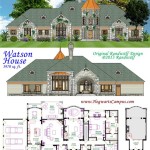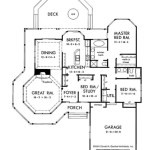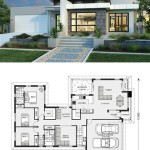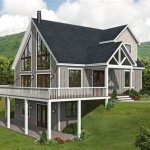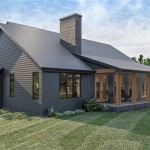Floor Plans for Small Homes: Maximizing Space and Functionality
Designing a small home is a unique challenge that involves maximizing space and functionality within a limited footprint. Floor plans for small homes, therefore, require careful planning and attention to detail. These plans often involve creative layout solutions, efficient storage systems, and the integration of multi-functional spaces to ensure a comfortable and practical living environment. This article will explore key aspects of floor plan design for small homes, discussing space-saving strategies, common layouts, and considerations for furniture placement.
Space-Saving Strategies in Small Home Floor Plans
Effective space utilization is paramount in small home design. Floor plans must incorporate strategies that minimize wasted space and maximize usable areas. Here are some common techniques:
- Open Floor Plans: Eliminating unnecessary walls creates a sense of spaciousness and allows light to flow freely throughout the home. This approach is particularly effective in combining living, dining, and kitchen areas.
- Multi-Functional Spaces: Small homes often necessitate multifunctional spaces. For example, a home office could double as a guest room, or a living room could include a dining area. This approach optimizes space utilization and avoids dedicating separate rooms for specific purposes.
- Smart Storage Solutions: Built-in shelving, cabinets, and under-stair storage are essential for maximizing storage capacity in small homes. These solutions provide organized storage without compromising valuable floor space.
- Vertical Space: Utilizing vertical space is crucial in small homes. Tall cabinets, shelves, and lofted beds can create additional storage and sleeping areas, relieving pressure on floor space.
Common Small Home Floor Plan Layouts
Several common floor plan layouts are particularly suitable for maximizing space in small homes. These layouts offer unique advantages in terms of functionality and flow:
- One-Story: Single-story homes eliminate the need for stairs, making them ideal for families with young children or elderly residents. One-story plans provide a spacious feel and allow for easy accessibility. The downside is that a one-story home may require a larger lot to accommodate the same living space as a two-story home.
- Two-Story: Two-story homes offer greater square footage within a smaller footprint. This design is beneficial for increasing sleeping space or accommodating additional bathrooms. However, stairs can be a barrier for some individuals.
- L-Shaped: L-shaped floor plans provide a distinct separation between living areas and private spaces. This layout creates unique angles and encourages natural light flow. L-shaped plans can also be adapted to suit various lot sizes and orientations.
- U-Shaped: U-shaped floor plans offer a sense of enclosure and create distinct zones within a single space. This layout is often utilized for kitchen and dining areas, providing a central hub for the home. U-shaped layouts can also be adapted for bedrooms or bathrooms.
Furniture Placement Considerations for Small Homes
Furniture placement plays a crucial role in making a small home feel spacious and comfortable. Here are some key considerations:
- Scale and Proportion: Choose furniture items that are proportionate to the size of the room. Oversized furniture can overwhelm a small space, while undersized furniture may appear lost.
- Multi-Functional Furniture: Opt for furniture pieces that serve multiple purposes. For instance, a sofa bed can serve as both a seating area and a guest bed.
- Wall-Mounted Storage: Use wall-mounted shelves, mirrors, and artwork to minimize clutter and maximize floor space. This approach helps to create a sense of spaciousness.
- Light and Color: Light colors and natural light can make a small space feel larger. Consider using a light color palette on walls, floors, and ceilings to reflect light and enhance the sense of openness.
Designing a small home involves careful consideration of space, functionality, and aesthetics. By implementing these strategies, homeowners can create comfortable and practical living environments that maximize space and enhance the overall living experience.

10 Small House Plans With Open Floor Blog Homeplans Com

10 Small House Plans With Open Floor Blog Homeplans Com

27 Adorable Free Tiny House Floor Plans Craft Mart

10 Small House Plans With Open Floor Blog Homeplans Com

Small House Floor Plan Square Footprint Lends Itself To Mini Villa Design Plans

Plan 73931 Detached Guest House Or Tiny With Photos

Plan No 826420 House Plans By Westhomeplanners Com Small Floor Tiny

These Small House Plans Pack A Lot Of Punch Houseplans Blog Com

10 Small House Plans With Open Floor Blog Homeplans Com

Small House Plans With Storage The Designers



